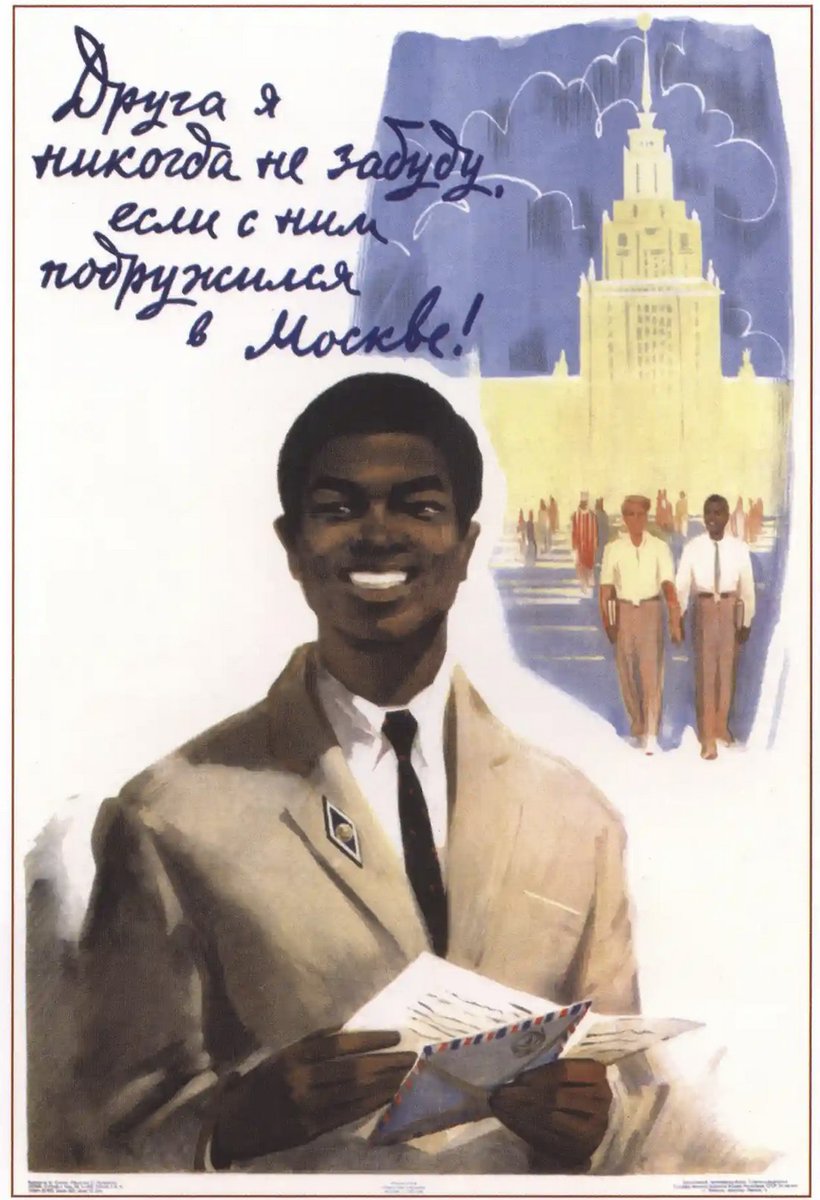Was the USSR Anti-Racist?
Mariam Naiem · 1 Jun 2022 · Adapted from original Twitter thread
Was the USSR anti-racist? Spoiler alert: No. However, this myth still exists in some circles.

On November 2, 1917, the Bolsheviks issued the Declaration of the Rights of the Peoples of Russia, which promised the “abolition of any national and national-religious privileges and disabilities” and the “free development of national minorities,” the name of this declaration itself should let us know that 172 ethnicities and nations were forcibly “united” into “Russia.”
The systemic and institutionalized racism was dire at the time in the US, especially for the black population (not saying there is no racism now). It was the perfect moment for the Soviet Union to proclaim itself the global harbinger of anti-racism.

The anti-racist policy of the USSR was surface-level, and propagandist in nature. It was done to create an appearance of being better than the West, more than to actually dismantle institutional racism. Although the USSR had many ethnicities, they decided to use African Americans from the US to demonstrate their anti-racism. African Americans who visited and immigrated to the USSR, such as Claude McKay, W. E. B. Du Bois, William L. Patterson, and Harry Haywood, whose image the party used, lived a much more comfortable life than the USSR’s average residents. While the country lived with an incredible deficit, the Black visitors received free housing, food, clothing, weekly allowances, and all-expense-paid vacations.
For more than 30 years, Soviet propaganda created a visual image of anti-racism through posters, photographs, and films. A prominent example is a 1936 movie called Circus.

It is about a white American actress who has a black kid. For this, she is persecuted in the US. However, in the USSR, she finds there is no racism, which is manifested in representatives of different ethnicities singing a lullaby to the kid.
These efforts could be laudable if they were not whitewashing a bleak reality. While aiming to build an image of an anti-racist state, ethnic essentialism and state-level ethnic cleansing and genocide were the norms in the USSR. Here are only some examples:
Crimean Tatars. The entire ethnic Crimean Tatar population (at least ca. 200,000 people) was deported within two days in 1944. About 8,000 died during the deportation, and between 20% and 46.2% died in total.
North Caucasians. 478,000 people, of which 387,000 Chechens and 91,000 Ingush, were arrested and deported from the Caucasus to Central Asia in 1944. Between 30% and 50% of the deportees died during the journey of deportation and in the first years.
Kalmyks. In 1943, about 93,000 Kalmyks were deported to Siberia. Many of them died during the journey as well. Some who survived the journey died during the first glacial Siberian winter.
Koreans. 175,000 Koreans who lived along the Chinese and Korean borders were deported to Kazakh SSR and the Uzbek SSR in 1937.
In the 1950s, Khrushchev rehabilitated most of the punished peoples, except for Crimean Tatars, Russian Germans, and Meskhetian Turks, who were essentialized as Nazi collaborators for decades after WWII.
I encourage you to imagine the amount of human suffering behind these numbers. Deportation might sound like “a trip.” In reality, the Soviets put these people on freight trains for days or weeks on short notice. Thousands were dying in the process, as well as afterward.
The Soviet racism was not only manifested in the catastrophic ethnic cleansing and killing campaigns, but also in comparably less catastrophic things such as racial power imbalance, unequal access to jobs and opportunities, and everyday bigotry.
In this essay, @mbudjeryn and @tkassenova try to crystallize the informal, unwritten racial hierarchy in the Soviet Union, which largely mirrors the global racial hierarchy:

Discussions of racial injustice in the United States are shaking the public sphere. Much of the onus in these discussions is on the white West as the locus and perpetrator of racism, especially on the United States with its lingering legacy of slavery. But racism, injustice, and discrimination are not prerogatives of the West. They […]
Source: inkstickmedia.com
The first, most important, are the Ethnic Russians, the Older Brother. Next, two more younger brothers: Belarusians and Ukrainians (“white russians” and “little russians”). Three, the Baltic peoples: Lithuanians, Latvians, and Estonians. Four, the Moldovans, nations of the Caucasus, the Georgians, Armenians, and Turkic Azeris. Five, less white and more ‘Orient-looking’ Central Asians — Kazakhs, Kyrgyz, Tajiks, Turkmens, and Uzbeks. Finally, The Tatars, Buryats, Dagestani, and others are at the bottom of the hierarchy. This is especially telling now that Buryats and Caucasians are proportionally overrepresented among the known Russian war casualties.1
The official stance of the USSR was anti-racism. Moreover, the state propaganda proclaimed there is no racism, imperialism, sexism, or homosexuality (sic) in the country, implying that these are sins of the capitalistic world and not part of the communistic heaven. It was anything but anti-racist despite the attempts to build this image. USSR conducted ethnic cleansing and genocidal campaigns, and the culture was deeply ingrained with the racial stratification.
-
Initially, I sad “majority”, but this is wrong. ↩